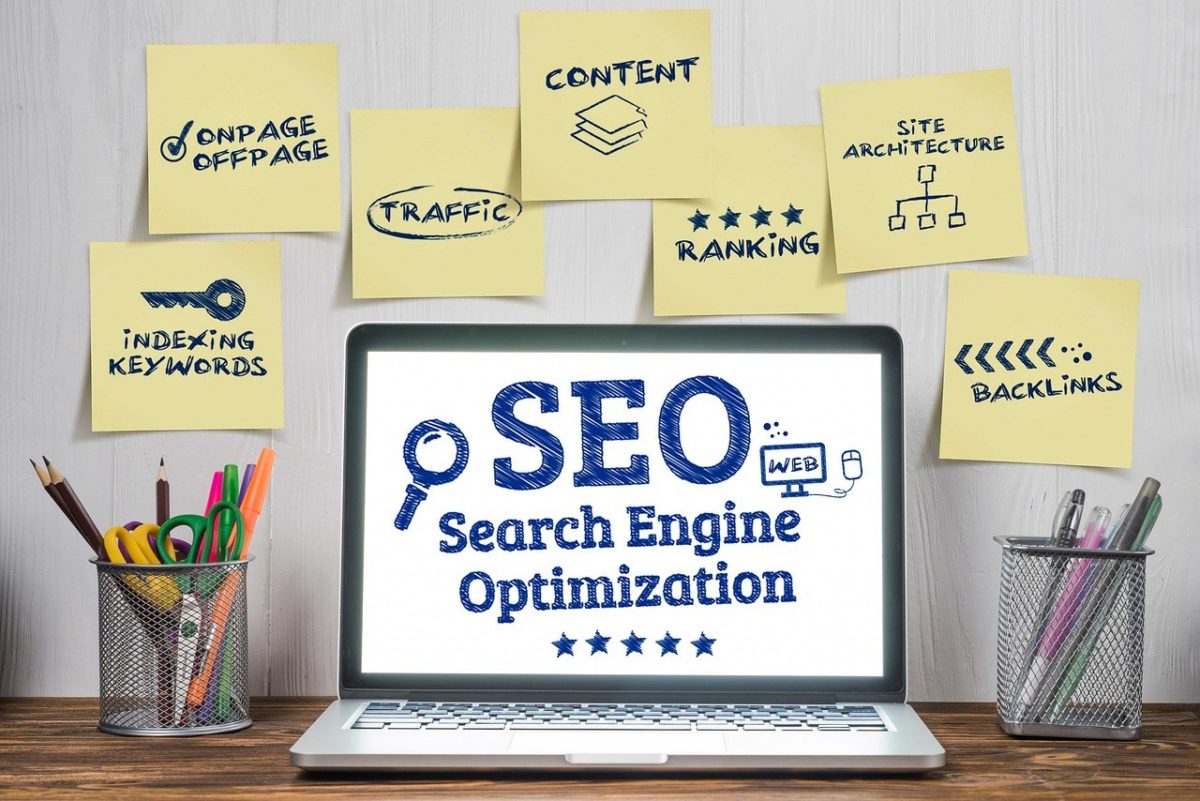Launching a WordPress website is great for your online business. Publishing SEO-friendly blog posts is even better, but if you want to boost your SEO and appear on Google’s first page, you have to do more in website optimization. It’s crucial for your digital marketing strategy. WordPress SEO optimization requires some knowledge, tools, and techniques. First, a WordPress site needs some correct basic settings and plugins. Secondly, you will have to do some SEO optimization. Let’s see 10 steps to improve your WordPress site SEO.
SEO ON-SITE: OPTIMIZE WORDPRESS SITE STRUCTURE
A technical structure is the first thing you need to improve on your website in order to make it easy for search engines to crawl it.
1) WORDPRESS PERMALINKS CONFIGURATION
We start with permalinks configuration in WordPress Settings. By default, WordPress uses the following URL structure for your posts: mywebsite.com/?p=123. This permalink type is not SEO-friendly and it’s not semantic at all. This means you miss the opportunity of inserting some important keywords in the URLs which are crawled and indexed by search engines. In the settings, check the custom structure where the article title is automatically taken to the permalink.
If your WordPress site has already existed for a while, then after changing the permalinks you need to proceed to 301 redirects configuration, from the old links to the new ones. It helps you to avoid duplicate content and traffic loss issues.
2) WORDPRESS SEO PLUGINS INSTALLATION
There are many WordPress plugins that will really boost your SEO. Installing a good SEO plugin is a must because it enables meta tags settings and technical files configuration. An SEO plugin also allows you to add Open Graph fields for social media posting to every page, and Structural Data for Local SEO.
After installing a plugin, you should enable the rel=”canonical” tag for pages and articles. It that way you will eliminate duplicate content issues from your WordPress site. We use the Yoast SEO plugin, which provides users with a broad range of options in its free version. Another popular SEO plugin for WordPress is the All in One SEO Pack.

3) WORDPRESS TECHNICAL OPTIMIZATION PLUGINS
A powerful caching plugin is a must for WordPress sites. These tools cache static and dynamic content to decrease page loading time. Caching and minimizing all JavaScript and CSS files greatly accelerates the display of the site. And you get a faster WordPress site.
There are several plugins for caching and compressing your website files, such as WP Roquet, Fastest Cache and W3 Total Cache. No technical knowledge is needed, you have just to install and properly configure the plugin. The goal behind site speed performance is to improve user experience and Google ranking.
4) OPTIMIZE THE IMAGES ON YOUR WORDPRESS SITE
Optimizing your images by compressing and resizing them will reduce page size and decrease website loading time. You have different options: online and offline image compression solutions, or a WordPress plugin. There are several WordPress solutions for image optimization, such as Imagify or Smush.
These tools help you to compress any image and considerably reduce its size, enabling faster display on your website and improving user experience. Some caching plugins enable image optimization, such as Fastest Cache. So, you can have all in one. However, it’s possible only in the paid version.

5) CUSTOMIZE ROBOTS.TXT FILE
By default, search engines index all your pages and blog posts. However, on your WordPress site, there will be many pages with non-semantic content, unnecessary for users, such as sign-up registration and confirmation pages, author info, test, feedback and comments pages. The search engines may see these as thin content pages and downgrade your reputation.
So, how tell them not to index a page or article on the website? Well, you need to create and configure a file called “robots.txt”. This tool allows you to block specific pages from crawling by Google bots. The needed code looks like this:
User-agent: *
- Disallow: / cgi-bin
- Disallow: /wp-login.php
- Disallow: / wp-admin
- Disallow: / wp-includes
- Disallow: / wp-content /
- Disallow: / category /
- Disallow: * / trackback
- Disallow: * / feed
- Disallow: * / comments
After robots.txt configuration you have to place the file in your root folder on the FTP server where your WordPress site is hosted.
6) CREATE A SITEMAP.XML FOR A WORDPRESS SITE
Make it easy for search engines to crawl your website pages. There is a great tool for that, a sitemap for Search engine robots. In this technical file, you specify a list of links you want Google to index. The sitemap file allows you to define page priority and modification frequency.
There are three ways to add a sitemap to your WordPress site. You can code it manually. A second method is to use a sitemap generator, either offline or online. A third option is to use a WordPress sitemap plugin which generates the file automatically and dynamically. This feature is also available in comprehensive SEO plugins, like Yoast SEO.
With a plugin, the sitemap.xml is automatically updated and optimized for search engines, helping to avoid errors. Make sure to insert the path to your sitemap.xml in your robots.txt file. Once you have created a sitemap file, you need to submit it to Google via Search Console.

SEO ON-PAGE: OPTIMIZE WORDPRESS SITE CONTENT
7) WRITE ATTRACTIVE EFFECTIVE TITLES AND META TAGS
When you do a search in Google, you see a title and a meta description under the page link. These tags are important for both search engine robots and users. Search engines analyze the relevance of meta tags for each particular query. On the other hand, users decide on which site to click based on the snippet that they see in search results. Therefore, try to include the main keywords and key phrases in SEO titles and in meta descriptions. Don’t hesitate to use calls to action as well.
You can edit meta tags in your WordPress SEO plugin interface. The title tag is probably the most important on-site factor in providing search engines with information about the website. You can set custom titles and descriptions in the SEO plugin. However, we recommend writing them manually to be sure they include target keyphrases and perfectly match your page content.
8) PUBLISH NEW BLOG POSTS FREQUENTLY
“Content is king”; articles should be at the heart of your SEO strategy in order to increase the traffic and your website’s authority. Before you start editing an article, first, we recommend conducting keyword research and define a list of phrases you would like to rank through blog posting. The best tool for this task is the Google Keyword Planner. There is also a range of comprehensive SEO tools offering this feature. Secondly, you have to optimize your article and make sure it matches Google ranking rules.
- Create unique quality content of at least 300 words.
- Structure and prioritize your content with titles and subtitles (H1, H2, H3). Use synonyms to expand the lexical scope and avoid keywords stuffing.
- Insert internal links, at least two, to boost your own pages.
- Customize the permalink using the key phrase.
- Write an SEO title different from the article title
- Insert an optimized image
- Link to an external high authority page.
- Strategic use of WordPress categories. They help you organize related articles and show users a clear structure. Category names also provide clues about article content.

9) USE ALT ATTRIBUTES WITH WISDOM
Google does not yet have the ability to read and understand an image. You can help by adding an alternative text to your images that say what they are actually about. This text is indexed by search engines, and it plays a role for SEO. Therefore, you can use keywords in your ALT tag, but they should be relevant and justified. This technique helps you to get more traffic from image search, and a higher ranking of the page as well.
10) INTERNAL LINKING
Interlinking means that you link your WordPress articles and pages to other pages of your website. In terms of SEO, it is useful to use the anchor text for links. You can use the anchor text of the search query to rank for a particular keyword. However, don’t over-optimize it, because you may face punishment. Internal linking is beneficial not only for SEO purposes but it also gives your blog readers complementary information to your article. And it leads to an increase in page views and a lower bounce rate.

SEO OFF-PAGE: BUILDING LINKS
10) BUILDING LINKS
Your website and your content are now SEO-optimized, but there is still another important chapter if you want to increase your visibility and website authority. You need to get links that point to your WordPress site. Backlinks, when truly earned and coming from high authority domains, will contribute to brand visibility growth, higher website authority, brand trust building, and will obviously improve your Google ranking. When building links, you should be focused on quality, not so much on quantity.
DIRECTORIES AND GUEST BLOGGING
There are many techniques for link creation. First, directories are still a valid method. However, the risk is that many of them have a low ranking. You should use only trusted online directories, with a good PR score.
Secondly, you can get quality backlinks with guest posting. Unique articles posted on other websites with a link back to yours will grant your web project credibility and SEO authority. Guest blogging is a great ranking tool while implementing good SEO practices.
Unique articles posted on other websites with a link back to yours will grant your web project credibility and SEO authority. Guest blogging is a great ranking tool while implementing good SEO practices.
The best way to get natural links is to write awesome unique blog content and share it on social media. If and when your article is shared, republished and quoted by bloggers, it will bring natural links to your website. It’s worth doing because backlinks improve SEO performance and generate referral traffic, and it builds high ranking in Google’s search results.

12) SIGN UP TO GOOGLE SEARCH CONSOLE
Google Search Console, or Webmaster Tool, is a must-use service for anyone who cares about search engine optimization of their websites. As we mentioned above, using the Search Console interface you can submit your sitemap manually to Google, or you can send new pages or pages with fixed issues for priority indexation.
This tool provides you with all the necessary data about the positions of your pages in search results and keyphrases that your website is ranking highly. You can check the number of clicks you are getting from search results. Search Console will also notify you about crawling issues and broken links on your pages. Webmaster Tool also informs you about all your WordPress site internal linking and backlinks it is receiving.
Follow these 12 steps of UPQODE’s must-use WordPress SEO guide and you will greatly improve your Google ranking. Our SEO agency is constantly working on producing articles on digital marketing tips and trends. Have you liked the article? Then share it with your friends and colleagues and on Facebook and LinkedIn. If you have any tips or SEO hacks to share yourself, don’t hesitate to post in the comments section.



